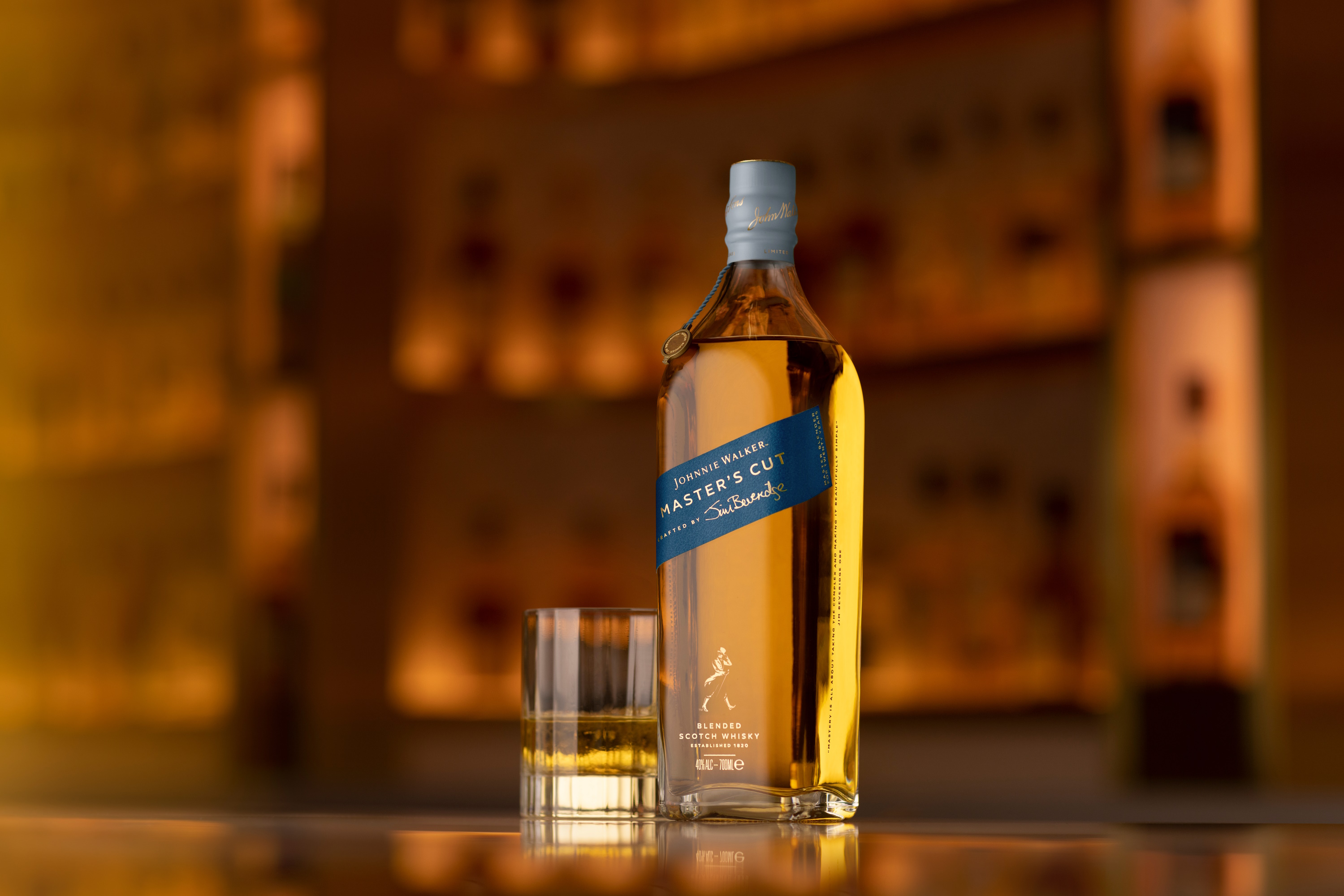Johnnie Walker Master's Cut

How many ingredients are needed to make a blended whiskey? Two will suffice, one grain whisky and one malt whisky. In other words, ingredients from two distilleries, producing two different types of whisky - grain and malt - are enough to create a blended Scotch whisky. Naturally, in the vast majority of cases, there are more of these ingredients, but a true master of couponing only needs two.
Johnnie Walker Master's Cut is an extraordinary new offering from Johnnie Walker, the largest Scotch whisky brand in the world. At the same time, it is a symbolic whisky, and on several levels. This is a whisky put together by the now-retired former Master Buyer of the Johnnie Walker brand, Jim Beveridge, replaced by Emma Walker in early 2022, after 40 years in the industry, including two decades as Master Buyer of the Johnnie Walker brand. It is a whisky made up of distillates from just two distilleries - the oldest grain whisky maker, Cameronbridge, and the youngest child in the Diageo family, the Roseisle distillery.
During his time working for Diageo, Jim Beveridge was mainly responsible for Johnnie Walker Blue Label whisky. Despite his humble beginnings in the industry as a chemical analyst, over time he has become one of the most respected figures in the whisky world. In 2019, he was honored with the Order of the British Empire. He ended his career and retired at the end of 2021. However, as you can see, the wolf is still drawn to the forest. In his own words, the whisky looks to the future, while appreciating the achievements of the past. The best embodiment of this idea is the creation of a liquor that is a composition of whiskies from one of the oldest distilleries and one of the youngest.
Cameronbridge, the world's largest grain whisky distillery, the only facility of its kind wholly owned by Diageo, is located in the village of Cameron Bridge in County Fife, a little north of Edinburgh in the Lowlands region. It was founded in 1824, was equipped with alembics and at the time produced what we would call today malt whisky, single malt whisky. However, its founder, John Haig, equipped it as early as 1829 with column instruments just developed by his cousin Robert Stein. One of them was used in Cameronbridge until 1929, so exactly one hundred years. Stein's design was upgraded fairly quickly by Aeneas Coffey and soon found use in Cameronbridge as well. At the end of the 19th century, the distillery operated two Stein columns, two Coffey columns and one traditional alembic. At the time, the Lowlands distillery's priority was to maximize production volume, linked to the exponentially growing demand for Scotch whisky throughout almost the entire world. It was a time when French vineyards, devastated by the phylloxera plague, were unable to produce an adequate amount of cognac, and Scotch whisky was firmly on the shoulders of the world's spirits connoisseurs.
Roseisle, on the other hand, is the child of the latest wave of Scotch whisky popularity. Built in 2009, the thoroughly modern distillery is one of the largest malt whisky plants today. Designed to be able to produce different styles of malt whisky. The distillery's goal is not so much to produce single malt whisky under its own brand (although we are expected to get the first official edition of this under Diageo Special Releases any day now), but to replace malt distillates from other Diageo-owned distilleries in the conglomerate's blends, and thus free up their production capacity so that larger volumes of single malt whiskies from them can be sent to market. In other words, the effect of Roseisle's operations is to increase the supply of Cardhu, Cragganmore, Glen Elgin or Dalwhinnie, whose place in Diageo's blends will be taken by whisky made at Roseisle.
Johnnie Walker Master's Cut is an edition limited to 1,000 bottles, which will soon be available only at Johnnie Walker Princes Street in Edinburgh. The retail price of a single bottle will be a round thousand pounds.
[23.05.2023 / photo: Diageo]